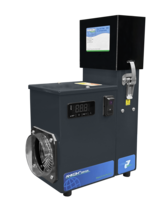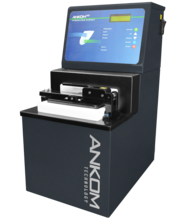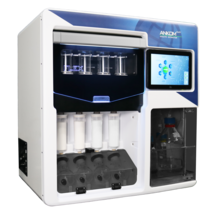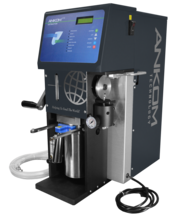
Crude Fat Analysis
Fat provides energy in the body, supports vital cell function, aids in the absorption of fat-soluble vitamins, and more. Total fat, as detailed on the nutrition facts label, describes the total weight of saturated, polyunsaturated, and monounsaturated fat per specified serving of a food product. Accurate fat content can help inform consumers and may lower obesity, heart disease, and other associated diseases. Food producers, regulatory agencies, and researchers are among the industries involved in fat determination.
Crude Fat refers to a crude mixture of fat-soluble compounds in a sample. Crude fat content is determined by extracting all available fat with a solvent, and then evaporating the solvent. This type of fat determination includes free saturated and unsaturated fractions, and any other solvent soluble fractions. This determination is used more often by animal feed producers and regulators to manage intake.
Soxhlet Method
The most widely known method of extraction is the Soxhlet method developed by Franz von Soxhlet. The Soxhlet method is a direct method that results in complete extraction and involves high technician involvement. To perform the Soxhlet method, a sample is first placed in a thimble that possesses porous walls.
Then, the sample is continuously washed with a pure solvent, such as hexane, which is regenerated by distillation and siphoning. This effectively removes the analyte from the sample. Once extraction is complete, the solvent is then boiled off, leaving behind the extracted fat. The extracted fat is then weighed.
Randall Method
The Randall method is a modification of the Soxhlet extraction. By submerging the sample in boiling solvent, this method reduces the time needed for extraction. Instead of washing the sample with fresh solvent portions – like Soxhlet extraction - the sample is continually boiled in one batch of solvent. This solvent is light petroleum, which is very similar to petroleum ether and hexane. Like the Soxhlet method of extraction, the Randall is considered a direct method, as fat values are determined by weighing the extracted analyte.
This type of extraction is also utilized after acid hydrolysis of a sample, to analyze for Total fat content. In this process, the sample is first hydrolyzed with 3N HCl. Any residue and filter retained is then extracted according to the standard Randall procedure to quantify fat in the filter and residue.
Solid Phase Extraction
SPE (Solid Phase Extraction) technology is also utilized in the determination of crude fat, based on AOAC 954.02, Fat (Crude) or Ether Extract in Animal Feed. This method is performed by the ANKOM FLEX Analyte Extractor.
Automated Soxhlet
The ANKOM XT15 Extractor is considered an automated Soxhlet extraction technique with the official crude fat method designation of AOCS Am 5-04. The XT15 Crude Fat method is based on AOAC 954.02. Instead of utilizing a thimble with porous walls, up to 15 samples are placed in ANKOM XT4 Filter Bags and inserted into the XT15 extraction chamber. Like the Soxhlet method, the samples are then continually washed with distilled hexane, under pressure, speeding up the process. After the analyte is removed from the sample matrix, the XT15 rinses away the solvent containing the fat. Digested samples, in filter bags, are dried and weighed. Fat values are determined via an indirect way of recovery, as calculations are based on weight loss of the sample post extraction.
Part #
The ANKOM RD Dryer 120v 50/60 HZ is designed to dry samples and resist corrosion. The following two filters can be used with the RD Dryer depending on your application: 1) The RD1 Dryer Activated Carbon Filter is used when drying filter bags before...
Part #
Automated Total Fat Extraction The ANKOM HCl Hydrolysis System provides an easy method for performing the hydrolysis step in total fat/oil analysis . Filter Bag Technology prevents sample transfer errors and allows for batch hydrolysis of up to 15...
Part #
Automated Saponification to Isolation The ANKOM FLEX Analyte Extractor's innovative design and automated technology supports multiple analysis configurations and preparation: Vitamin & Cholesterol methods based on: AOAC 2011.07, EN-12823-1, EN-12822...
Part #
Automated Crude Fat Extraction Official Crude Fat Extraction Method AOCS Am 5-04 The ANKOM XT15 Extractor provides a solution for efficient and economical solvent extraction in fat/oil analysis. Fat ranges from 0% to 100% have been accurately...



